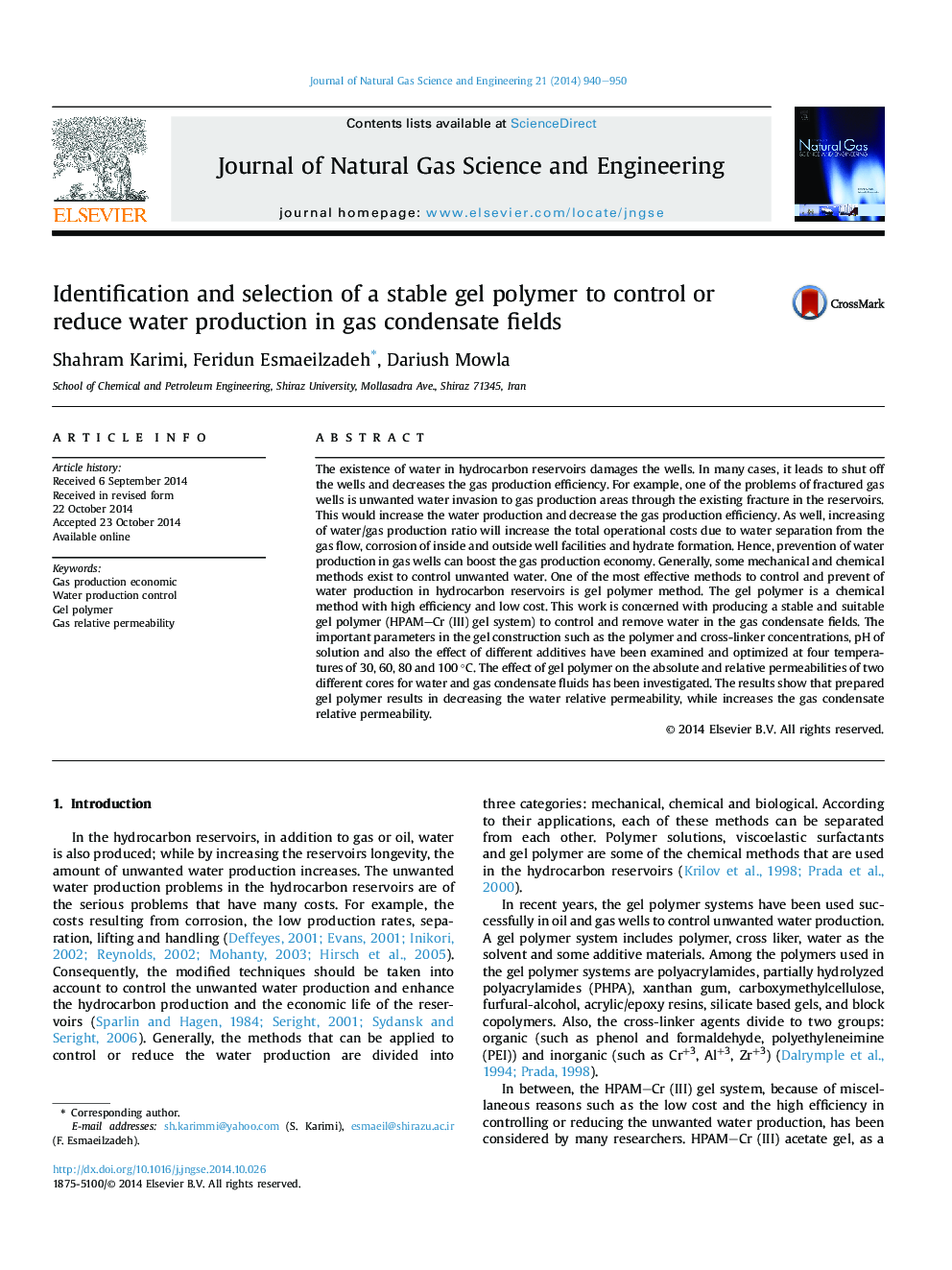| Article ID | Journal | Published Year | Pages | File Type |
|---|---|---|---|---|
| 8129452 | Journal of Natural Gas Science and Engineering | 2014 | 11 Pages |
Abstract
The existence of water in hydrocarbon reservoirs damages the wells. In many cases, it leads to shut off the wells and decreases the gas production efficiency. For example, one of the problems of fractured gas wells is unwanted water invasion to gas production areas through the existing fracture in the reservoirs. This would increase the water production and decrease the gas production efficiency. As well, increasing of water/gas production ratio will increase the total operational costs due to water separation from the gas flow, corrosion of inside and outside well facilities and hydrate formation. Hence, prevention of water production in gas wells can boost the gas production economy. Generally, some mechanical and chemical methods exist to control unwanted water. One of the most effective methods to control and prevent of water production in hydrocarbon reservoirs is gel polymer method. The gel polymer is a chemical method with high efficiency and low cost. This work is concerned with producing a stable and suitable gel polymer (HPAM-Cr (III) gel system) to control and remove water in the gas condensate fields. The important parameters in the gel construction such as the polymer and cross-linker concentrations, pH of solution and also the effect of different additives have been examined and optimized at four temperatures of 30, 60, 80 and 100 °C. The effect of gel polymer on the absolute and relative permeabilities of two different cores for water and gas condensate fluids has been investigated. The results show that prepared gel polymer results in decreasing the water relative permeability, while increases the gas condensate relative permeability.
Keywords
Related Topics
Physical Sciences and Engineering
Earth and Planetary Sciences
Earth and Planetary Sciences (General)
Authors
Shahram Karimi, Feridun Esmaeilzadeh, Dariush Mowla,
